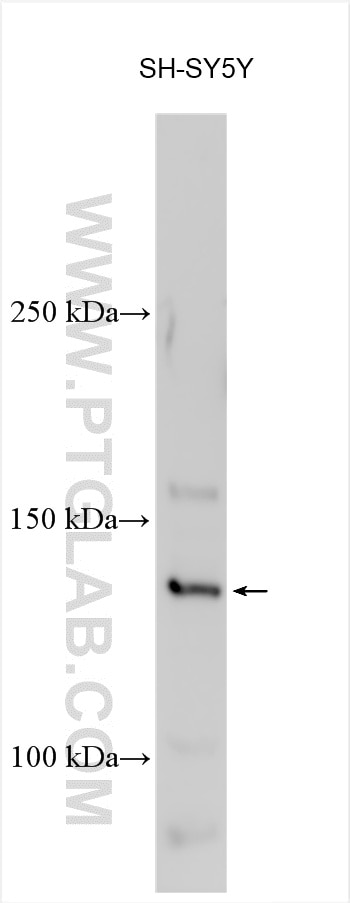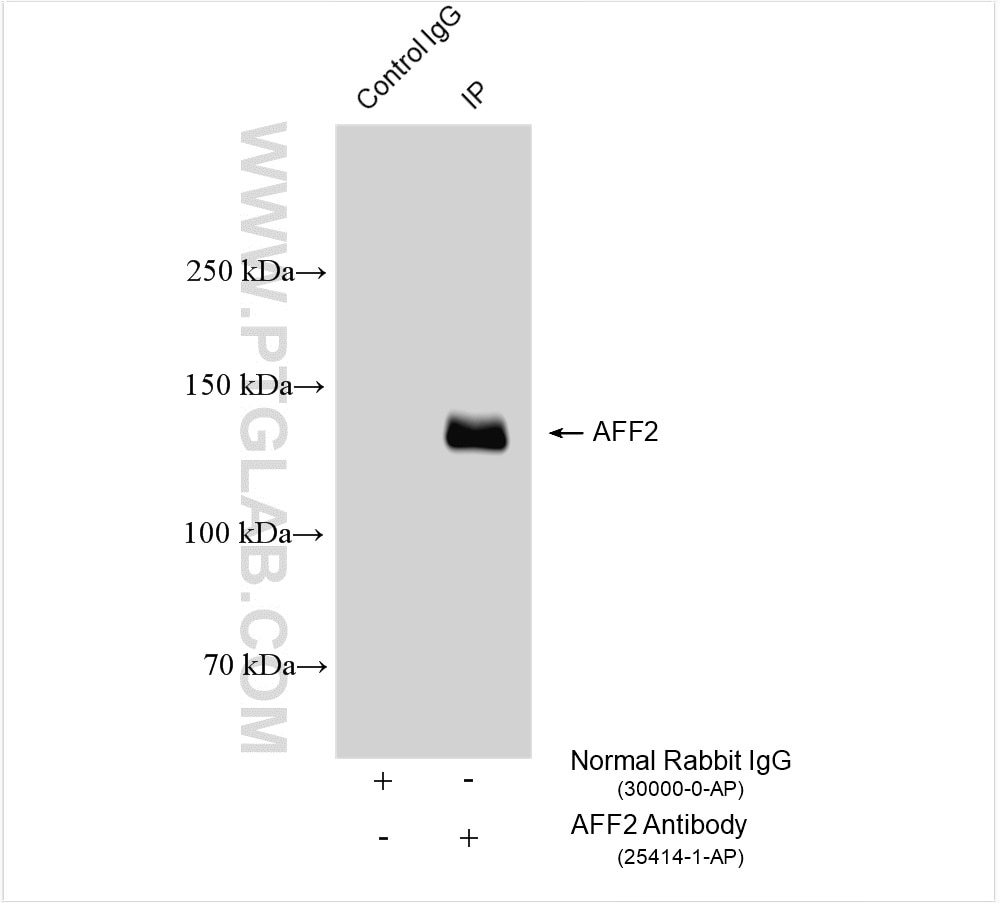Validation Data Gallery
Tested Applications
| Positive WB detected in | SH-SY5Y cells |
| Positive IP detected in | SH-SY5Y cells |
Recommended dilution
| Application | Dilution |
|---|---|
| Western Blot (WB) | WB : 1:500-1:2000 |
| Immunoprecipitation (IP) | IP : 0.5-4.0 ug for 1.0-3.0 mg of total protein lysate |
| It is recommended that this reagent should be titrated in each testing system to obtain optimal results. | |
| Sample-dependent, Check data in validation data gallery. | |
Product Information
25414-1-AP targets AFF2 in WB, IP, ELISA applications and shows reactivity with human samples.
| Tested Reactivity | human |
| Host / Isotype | Rabbit / IgG |
| Class | Polyclonal |
| Type | Antibody |
| Immunogen |
CatNo: Ag22225 Product name: Recombinant human AFF2 protein Source: e coli.-derived, PGEX-4T Tag: GST Domain: 80-263 aa of BC132683 Sequence: LLTNHSNQNHLVGIPKNSVPQNPNNKNEPSFFPEQKNRIIPPHQDNTHPSAPMPPPSVVILNSTLIHSNRKSKPEWSRDSHNPSTVLASQASGQPNKMQTLTQDQSQAKLEDFFVYPAEQPQIGEVEESNPSAKEDSNPNSSGEDAFKEIFQSNSPEESEFAVQAPGSPLVASSLLAPSSGLSV 相同性解析による交差性が予測される生物種 |
| Full Name | AF4/FMR2 family, member 2 |
| Calculated molecular weight | 1311 aa, 145 kDa |
| Observed molecular weight | 145 kDa |
| GenBank accession number | BC132683 |
| Gene Symbol | AFF2 |
| Gene ID (NCBI) | 2334 |
| Conjugate | Unconjugated |
| Form | |
| Form | Liquid |
| Purification Method | Antigen affinity purification |
| UNIPROT ID | P51816 |
| Storage Buffer | PBS with 0.02% sodium azide and 50% glycerol{{ptg:BufferTemp}}7.3 |
| Storage Conditions | Store at -20°C. Stable for one year after shipment. Aliquoting is unnecessary for -20oC storage. |
Background Information
AFF2 (OMIM* 300806) (also known as FMR2 gene), which encodes AF4/FMR2 family member 2, is a transcriptional factor and RNA-binding protein that plays an important role in transcriptional regulation, RNA splicing, mRNA processing, and nuclear speckle organization . AFF2 is highly conserved and abundantly expressed in human brain, being essential for brain development. Homozygous AFF2 knock-out mice showed abnormal central nervous system synaptic transmission, abnormal excitatory postsynaptic potential, and premature death (PMID: 35431806).
Protocols
| Product Specific Protocols | |
|---|---|
| IP protocol for AFF2 antibody 25414-1-AP | Download protocol |
| WB protocol for AFF2 antibody 25414-1-AP | Download protocol |
| Standard Protocols | |
|---|---|
| Click here to view our Standard Protocols |


